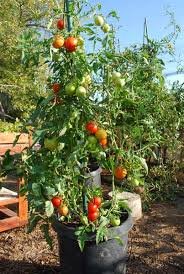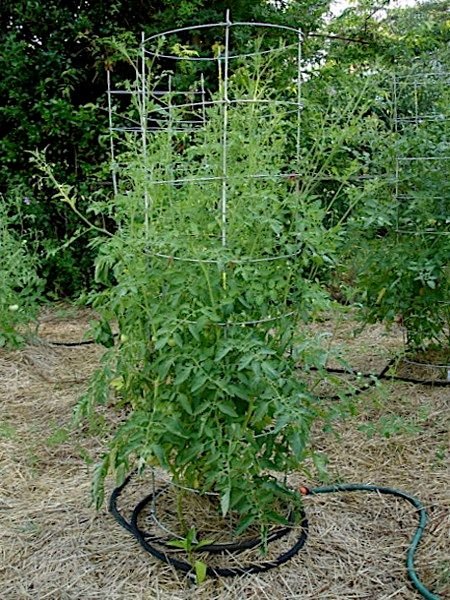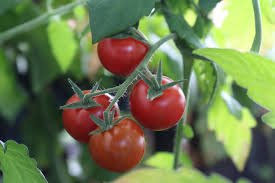Actually I think Not only do you save money by growing tomatoes at home, but you also get the reward of plucking perfectly ripe fruits from the vine. Unlike their supermarket counterparts, vine-ripened tomatoes have sweet, juicy flesh that contributes unmistakable depth of flavor to any salad, pasta, or BLT. With a few tips for planting tomato seedlings, you'll be on your way to a tomato bonanza...
.jpeg) @ctrl-alt-nwo sir...
@ctrl-alt-nwo sir...
Find a sunny spot. Tomato plants thrive in six to eight hours of daily sunshine. Containers can be moved throughout the growing season and are a great choice for home growers who have limited garden space. Be sure to provide enough room for each plant's growth. One tiny seedling can reach an astonishing height of ten feet and will need at least two cubic feet of soil.

Consider climate, size, and cooking use. Each cultivated variety (cultivar) offers a unique set of characteristics. Meaty tomatoes with few seeds, like San Marzano and Amish Paste, are ideal for sauce making. Short and stocky cultivars adapt well to containers, as do types that produce smaller fruits. All heirloom cultivars are open pollinated, meaning that year after year their seeds can be saved and will grow into identical plants. Like a precious piece of grandmother's jewelry, heirloom seeds are often passed down from one generation to the next. Hybrids, on the other hand, are combinations of two or more different tomato plants, bred together for traits such as disease resistance or uniform shape.
Plant young seedlings deeply in nutrient-rich soil. Fill containers with equal parts planting mix and potting soil. Combined together, the two provide an aerated, medium density environment for roots to expand and access nutrients. Dig a hole deep enough to cover all but the top three to four inches of the seedling. It's okay to bury the lowest leaves. Those fuzzy white hairs on the stem will form a sturdy adventitious root system.
.jpeg)
Water only as needed. A simple way to tell if your plant needs water is to stick your fingers into the soil. It should feel damp several inches below the surface, but "tomatoes like to have dry feet," says Allison Melanson, who works for Tomatomania, a community of enthusiastic tomato lovers that organizes tomato seedling sales in California, Maryland, and Virginia. "Imagine if you had to wear soggy socks for days at a time!" she explains. Her recommendation is to soak the roots once every three days, and then to water less often as the plant begins to form green tomatoes.
Provide support as the plant grows. In the wild, tomato plants ramble along the ground but when cultivated vertically in home gardens, they require physical support from stakes, trellises, or cages. Generally, they also need nutritional support in the form of fertilizer. Melanson and other experienced home gardeners prefer organic fertilizer to synthetic fertilizer, which she describes as the botanical equivalent to a candy bar. "Synthetics offer a big burst but then lead to a sugar crash," she says. Apply organic fertilizer every two weeks to tomato plants growing in containers, and less often to plants growing directly in the ground. Crushed eggshells both fertilize the soil and deter soft-bellied pests from feasting on your tomatoes.
.jpeg)
Enjoy the harvest. After transplanting a seedling into a larger growing space--a patio container, an expansive garden, or something in between--pinch off the first yellow flowers that it produces. By pruning away this early production, you will encourage the plant to grow taller and wider before it produces fruit, ultimately leading to a more bountiful harvest. Pick the fruits when they give slightly and eat them as soon as possible. Some heirloom tomatoes have such high levels of natural sugar that they will burst on your kitchen countertop if ignored for too long. In the case of irresistible homegrown tomatoes, that shouldn't be a problem!
Happy garderning....take fresh foods...enjoy your life...
Thanks...